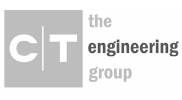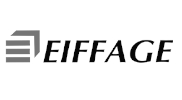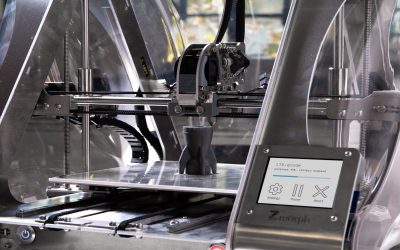Industry 4.0
innovation procceses

RESEARCH AREAS
Industry 4.0
Description
For CARTIF, the fourth industrial revolution allows the production assets to be interconnected in the factory and in the value chain (suppliers, customers, logistics, etc.) so that responsible managers of the factory can give an agile response to different changes such as unexpected breakdowns or variations in product specifications by the customer.
CARTIF, as a technology transfer center, works on the development of innovative enabling technologies that allow manufacturing companies to advance in the application of the “Industry 4.0” philosophy in their production processes, with the ultimate goal of improving the efficiency of their processes and not simply as a mere application of “cool” technologies.
Research Lines
- Research in modelling and diagnosis in predictive maintenance of actives under varying operating conditions.
- Research in prediction of actives life cycle models under constant operating speeds.
- Development of data acquisition systems for the supervision of processes.
- Development of new sensors addressed to IoT.
- Optimisation of operations management in manufacturing.
Patents
- P201030006: Dispositivo robotizado para la inspección de conductos.
- P201430965: Sistema para control y gestión de carga de vehículos eléctricos.
- P201430972: Dispositivo y procedimiento para medición de vibraciones.
Networks and Platforms
- A.SPIRE: A.SPIRE.
- BDVA: Big Data Value Associaton.
- CIGRE Comité España: International Council of Large Electric Systems. Comité España.
- EFFRA: European Factories of the Future Research Association.
- euRobotics AISBL: euRobotics aisbl (Association Internationale Sans But Lucratif).
- MANUFUTURE.
Publications
- Reñones, A; Vega, C.; de la Rosa, M. Vibration-Based Smart Sensor for High-Flow Dust Measurement. Sensors 2023, 23, 5019. https://doi.org/10.3390/s23115019
- Cristina Vega, Daniel Gomez, Aníbal Reñones, Cognitive Solutions in Process Industry: H2020 CAPRI Project, Proceedings of the 3rd International Conference on Innovative Intelligent Industrial Production and Logistics – ETCIIM, pag 267-278, 2022, ISBN 978-989-758-612-5; ISSN 2184-9285; DOI 10.5220/0011562 https://www.scitepress.org/PublicationsDetail.aspx?ID=qgHFkJiaFgs=&t=1
- Marta Galende y Aníbal Reñones; Ai4Manufacturing toolkit: la colección de tecnologías, herramientas y plataformas de inteligencia artificial del proyecto Ai Regio para la industria manufacturera; Proceedings of the V Workshop on Disruptive Information and Communication Technologies for Innovation and Digital Transformation; 2023-01-15, DOI: 10.14201/0aq03374352
- Laura Sanz, Marta Galende, Aníbal Reñones, Antonio Corral; Visualización inteligente para máquinas-herramienta: soporte a la toma de decisiones; V Taller sobre Tecnologías de la Información y la Comunicación Disruptivas para la Innovación y la Transformación Digital; DOI: https://doi.org/10.14201/0AQ03376981
- Reñones, A., & Galende, M. (2020). F.A.I.R. open dataset of brushed DC motor faults for testing of AI algorithms. ADCAIJ: Advances in Distributed Computing and Artificial Intelligence Journal, 9(4), 83-94. https://doi.org/10.14201/ADCAIJ2020948394
- Reñones, Anibal & Dalle Carbonare, Davide & Gusmeroli, Sergio. (2018). European Big Data Value Association Position Paper on the Smart Manufacturing Industry: Smart Services and Business Impact of Enterprise Interoperability. 10.1002/9781119564034.ch22.
- M.I. Rey, M. Galende, M.J. Fuente, G.I. Sainz-Palmero, Multi-objective based Fuzzy Rule Based Systems (FRBSs) for trade-off improvement in accuracy and interpretability: A rule relevance point of view., Knowledge-Based Systems, Volume 127, 2017, Pages 67-84.
- Saludes-Rodil, S.; Baeyens, E.; Rodríguez-Juan, C.P. Unsupervised Classification of Surface Defects in Wire Rod Production Obtained by Eddy Current Sensors. Sensors 2015, 15, 10100-10117.
- Villa Montoya, Luisa & Reñones, Anibal & Perán, José & Miguel, Luis. (2012). Statistical fault diagnosis based on vibration analysis for gear test-bench under non-stationary conditions of speed and load. Mechanical Systems and Signal Processing. 29. 436–446. 10.1016/j.ymssp.2011.12.013.
- Villa Montoya, Luisa & Reñones, Anibal & Perán, José & Miguel, Luis. (2011). Angular resampling for vibration analysis in wind turbines under non-linear speed fluctuation. Mechanical Systems and Signal Processing. 25. 2157-2168. 10.1016/j.ymssp.2011.01.022.
Reference clients:
Team

Fernando Gayubo Rojo
Head of Industrial and Digital Systems Division

Aníbal Reñones Domínguez
Head of Industry 4.0 Area
Related projects
DISRUPTIVE
DISRUPTIVE is a cross-border cooperation project which strives to promote and strengthen the collaboration, exchange and scientific production of the Digital Innovation Hubs (DIHs) located in Castilla y León and in the North of Portugal.
SMART-ROT
The SMARTROT project aims to ensure high maintainability and predictive fault detection in eddy current rotary inspection equipment used in the bar, wire and tube processing lines of steel processes.
SIMAFE
SIMAFE project, whose objective is the development of a training and training platform for railway maintenance personnel, based on advanced HMI techniques, electronic training…
3DCONS
The 3DCONS Project (New Construction Processes by means of 3D Printing) focuses on 3D printing technologies in the construction industry and covers several areas: robotics, the search for new materials, process automation, the technological drive of building and the development of design tools based on Building Information Modelling (BIM).
SHERIFF
The SHERIFF Project (Hybrid and Economic System of Flexible Integral Facade Rehabilitation) new tools for the energy rehabilitation of buildings.
CIBIC
The CIBIC project arises with the objective of improving the services provided by the companies of conservation of infrastructures, based on the application of new technologies to carry out the concept of intelligent systems that will help to improve the quality and the innovation of these services.














